Black bamboo remains one of the most popular varieties of bamboo. And it comes as no surprise. Black is beautiful, after all. But the world of bamboo is vast and mysterious. This subfamily of grasses includes something like 1,500 or more species and cultivars (subspecies), and more than one of them is black. So which species of grass do we refer to as Black Bamboo?
Phyllostachys nigra is the species that we most commonly designate as black bamboo. Native to China and Taiwan, this is a temperate, cold-hardy bamboo in the Arundinarieae tribe, with vigorously running rhizome roots. It also has a popular subspecies, P. nigra ‘Henon’, a timber bamboo that’s more grayish-green than black. In the tropics and subtropics, you can find Timor black (Bambusa lako), Java black (Gigantochloa atroviolacea) and Black asper (Dendrocalamus asper ‘Hitam’). These clumping varieties are more impressive but poorly suited for non-tropical climates.
In the following article, we’ll take a closer look at these various species of black bamboo, their distinct characteristics, and the pros and cons of including them in your garden.
NOTE: This article first appeared in January 2021, most recently updated in October 2024.
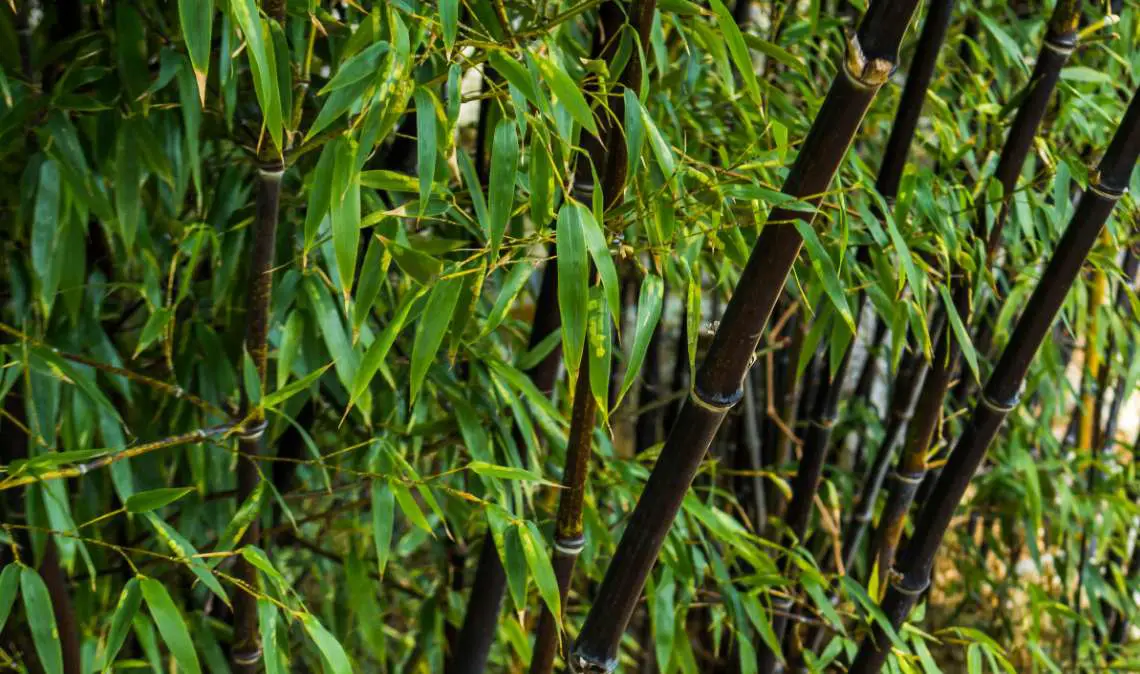
Why grow black bamboo?
Most people probably have a pretty specific idea of what bamboo looks like, yet the plant actually comes in an enormous variety of sizes, shapes and colors. Like most vegetation, bamboo has green leaves. But the stems, or culms, of a bamboo plant can be deep green, buttery yellow, blue, gray, or even magenta. Some of the most attractive bamboos have stripes on their culms. And of course, there’s black bamboo.
If you only have one bamboo plant in your garden, black bamboo might not be your first choice. If you have several, however, then adding a black species for a bit of variety is a great idea. The contrast of black bamboo poles amidst a grove of greens and yellows can produce a striking effect.
Even so, black bamboo does look beautiful on its own. Because of its bright green foliage, you already get that sense of contrast just between the leaves and the culms. To really highlight the beauty of your exotic specimen, you can try training some small spotlights on them. The nighttime lighting, shining up from below, can really showcase the vibrant colors and create interesting shadows on your bamboo.
In addition to beautifying your garden, black bamboo can also be harvested and used for making some lovely arts, crafts and furniture. Even if you have no woodworking skills, you can gather a few canes of bamboo in a tall, oriental vase and stand them in a corner for a dash of Feng Shui. Or use a pole for something as simple as a curtain rod. And with a bit more carpentry prowess, you can make some wind chimes, a picture frame, or even a bamboo coffee table.
Be prepared. Before you start planting, take a look at some essential tools on our recommended list of bamboo gardening supplies.
Species of black bamboo
Phyllostachys nigra
For bamboo growers in North America, Phyllostachys nigra is one of the most popular of all species, and it’s synonymous with black bamboo. This medium-sized species comes from China. It is attractive, hardy and easy to grow. Culms can get 20-30 feet tall in ideal conditions, and about 2 inches in diameter. These plants are hardy to at least 0º F, if not lower, so cold winters are not a problem.
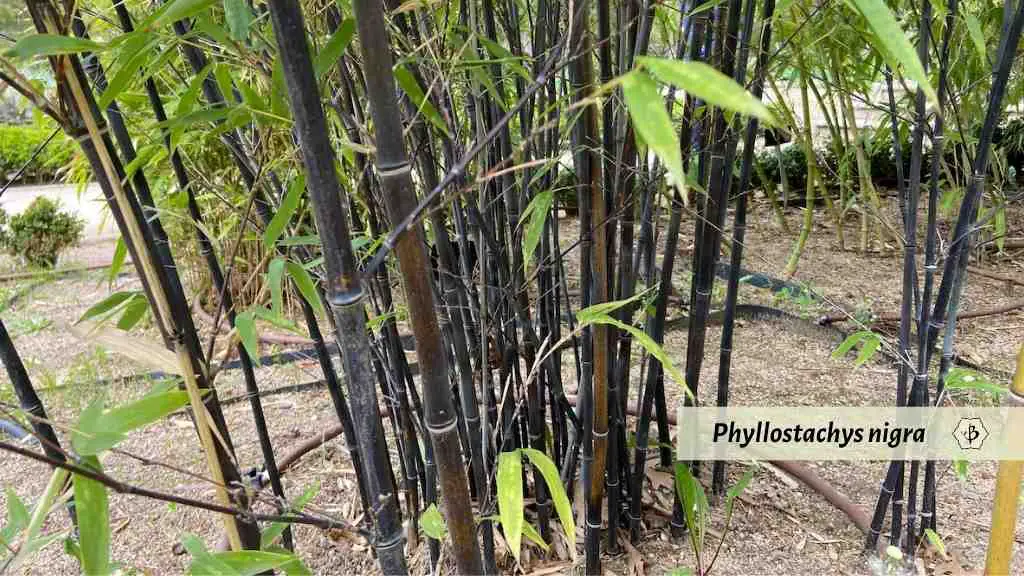
Like all species of Phyllostachys, this bamboo has running rhizomes, so it spreads rather aggressively and has the potential to become invasive. Be sure to take proper precautions to contain this bamboo so it doesn’t get out of control.
(Read our article on Running bamboo and clumping bamboo to learn more.)
New shoots come up green, but gradually turn dark brown and black with age. This generally happens within the first or second year. The poles keep their color after harvesting, so they are very popular for crafts and woodworking.
There are several varieties or subspecies of Phyllostachys nigra. In a fascinating development for bamboo growers, all varieties of P. nigra went into gregarious flowering, starting around 2022. There is some debate about whether the plants will all die after flowering, or if they will survive.
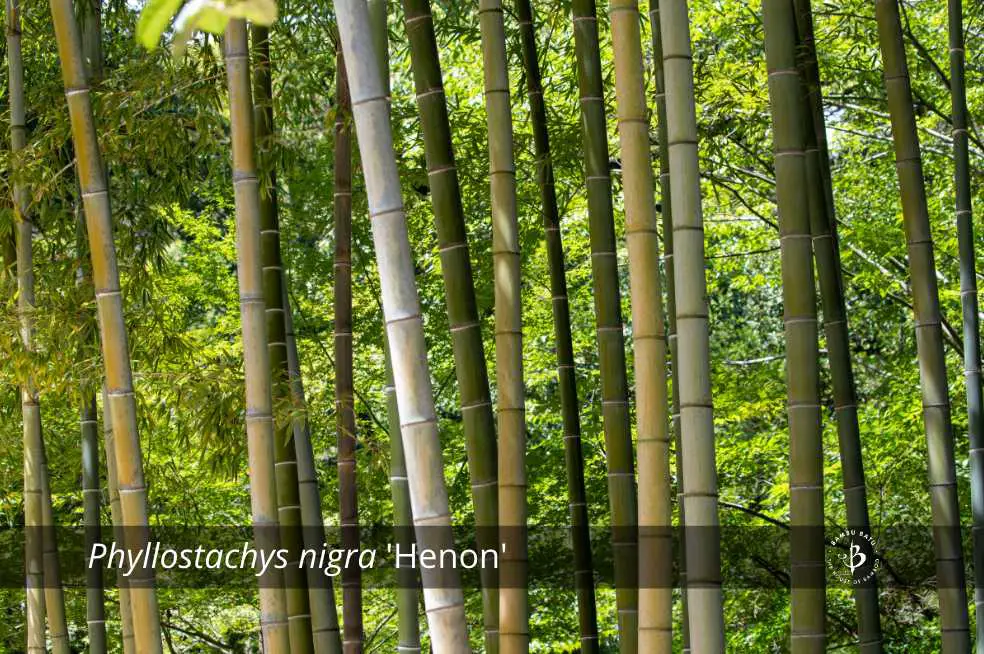
Phyllostachys nigra ‘Henonis’
Sometimes called Gray bamboo, Giant gray or simply Henon, this is an excellent choice of timber bamboo. Some authors believe Henon could be the original species, from which P. nigra evolved. This towering variety has beautiful, greenish-gray culms that can get up to 50 or 60 feet tall and more than 4 inches thick. It’s especially popular on the West Coast, where it performs better than many other timber bamboo species. Cold hardy to -5º or -10º F.

Phyllostachys nigra ‘Boryana’
Also called Tiger Bamboo, this is another, more exotic cultivar. Closer in size to Giant gray, Tiger bamboo is an impressive species, but instead of turning black, it has irregular brown patches. Sometimes it’s also called Leopard Bamboo, which may be a more accurate description of its markings. It’s a difficult variety to find, but not hard to grow. It’s cold hardy like the others, and also tolerates heat and drought. The large, straight poles can be very useful.
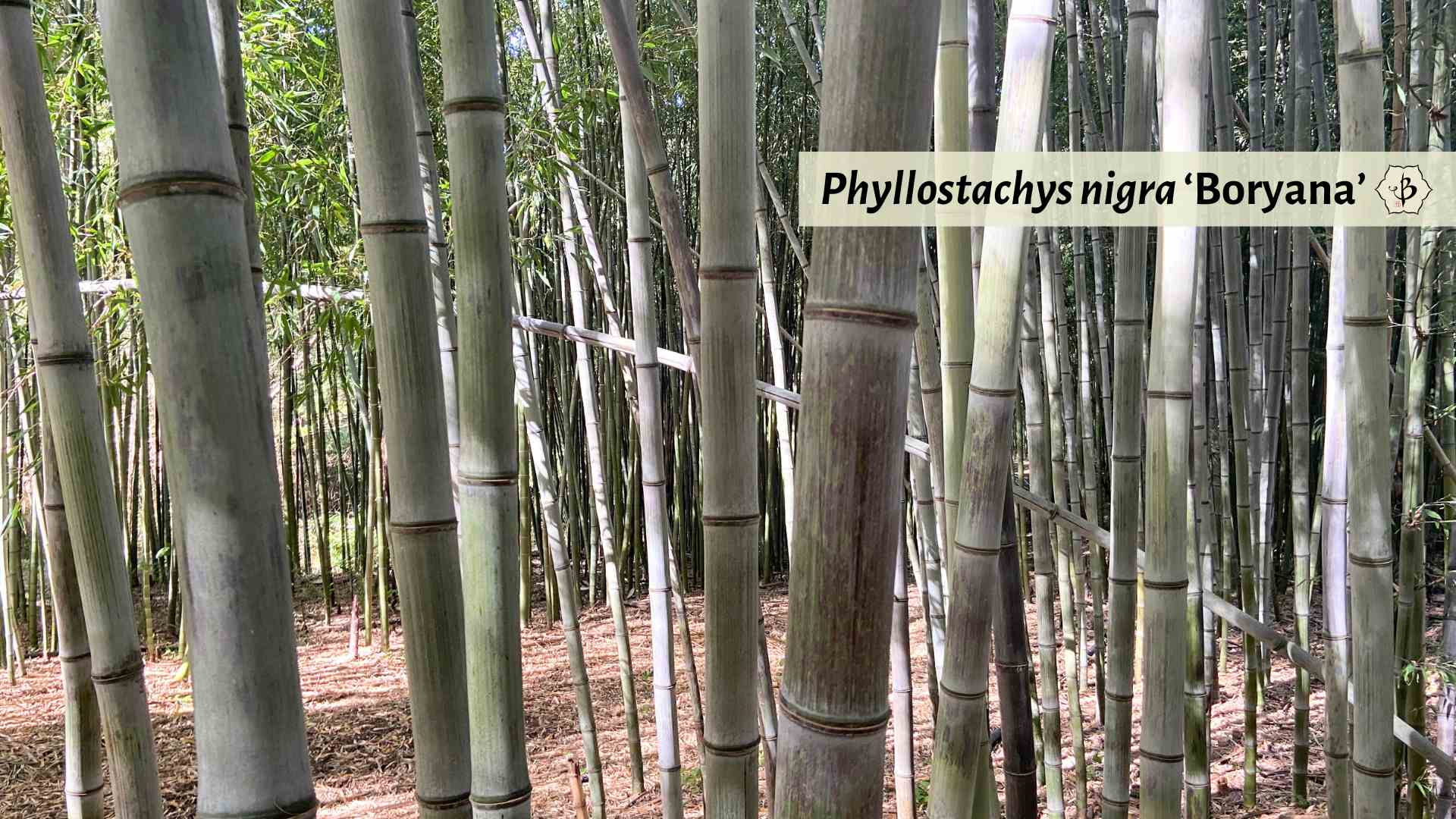
Phyllostachys nigra ‘Megurochiku’
Striped black bamboo an especially remarkable variety. Taking qualities from each of its close relatives, this unusual cultivar has culms that are olive green in color, with a distinctive black stripe running vertically, the length of the sulcus groove, on alternating sides of the stem. Not quite as large as Henon, the plant can get 40 to 50 feet tall with culms up to 3 inches in diameter, significantly taller and thicker than the original P. nigra.
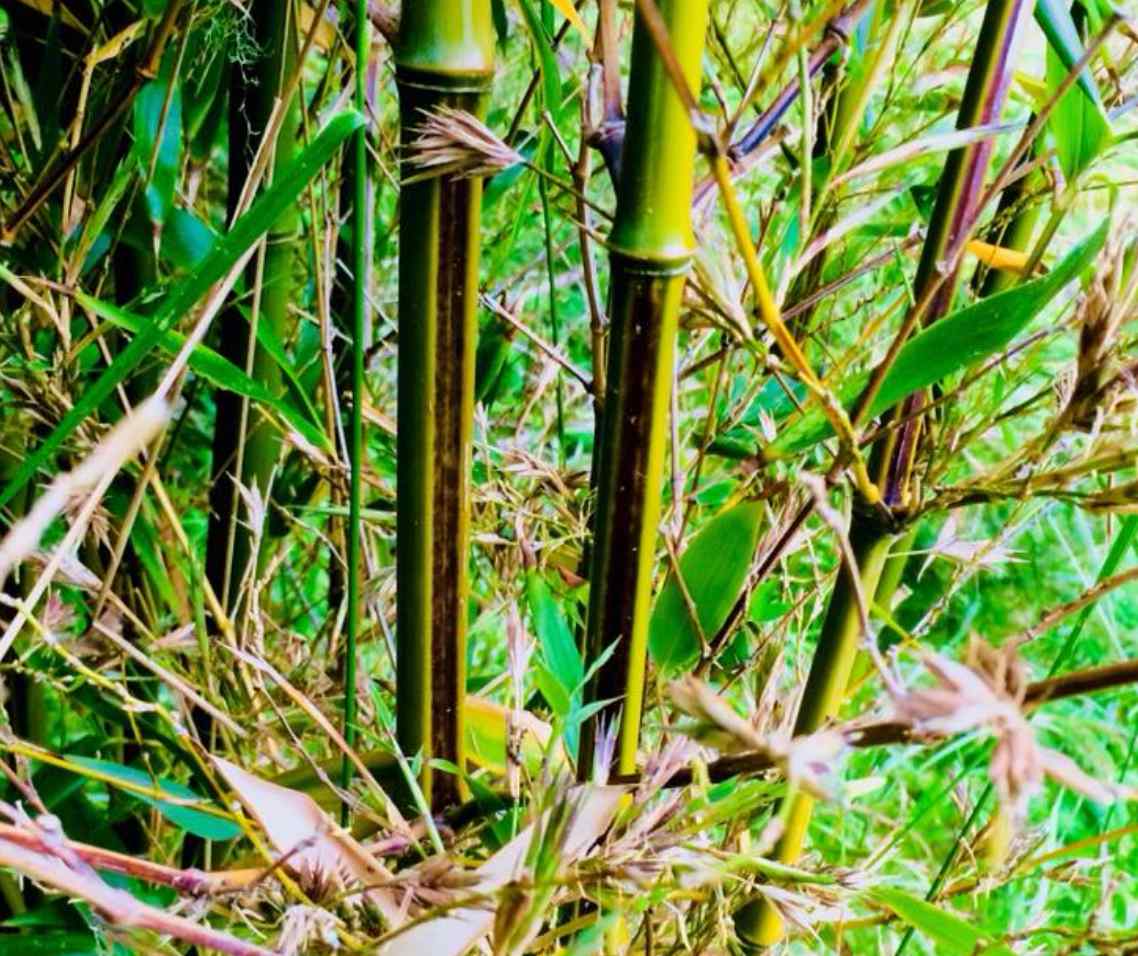
Other varieties of Phyllostachys nigra
Here is a list of other subspecies of Phyllostachys nigra, not included above. Most of these are quite rare.
- P. nigra ‘Basinigra’
- P. nigra ‘Bicolor’
- P. nigra ‘Flavescens’
- P. nigra ‘Fulva’
- P. nigra ‘Hanchiku’
- P. nigra ‘Henonis Albovariegata’
- P. nigra ‘Mejiro’
- P. nigra ‘Okina’
- P. nigra ‘Pendula’
- P. nigra ‘Shimadake’
- P. nigra ‘Sujidake’
Black Bamboo of the Tropics
Phyllostachys nigra is a popular ornamental bamboo in Europe and North America, as it’s very tolerant of cold weather. The following species of black bamboo are native to tropical climates. And unlike temperate bamboo, these varieties all have clumping rhizomes.
Bambusa lako, or Timor black bamboo
Timor Black Bamboo is an excellent alternative to the fast-spreading and potentially invasive Phyllostachys nigra. This clumping species of Bambusa is easier to control and produces spectacular canes, up to 50 or 60 feet tall and easily 4 inches thick. New shoots come up bright green, but turn shiny, black with age.

The glossy black sheen makes this one of the most attractive of all bamboos, but it is a tropical variety that cannot withstand freezing temperatures. Native to the island of Timor, Indonesia, this is a great choice in warmer places like Florida and Hawaii.
Gigantochloa atroviolacea, or Java black bamboo
The tropical genus Gigantochloa includes about 70 species of clumping bamboo, widespread throughout southern Asia and New Guinea. Their formidable girth, large leaves and thick foliage make for some very attractive ornamental specimens. But they need a tropical or subtropical setting to really do well.
Java Black is a great clumping alternative to the more common black bamboo. Similar or indistinguishable from Bambusa lako (Timor Black), some suggest that B. lako needs to be reclassified. Canes grow 40-50 feet tall and 4 inches thick, turning black more quickly, but not getting as shiny.
G. atter is another very tall and upright black bamboo from this genus, with thick culms that make an excellent construction material.

Dendrocalamus asper ‘Hitam’, or Black Asper
In the right climate and with enough space, this is a spectacular bamboo. It’s a subspecies of Asper, the variety so commonly farmed for commercial use across Asia, Africa, and even South America. But this rare strain is even larger and more attractive than the original species. In its native habitat, Indonesia, this tropical monster can grow 100 feet tall and up to 12 inches thick, making it one of the most massive bamboos of them all. Outside of the tropic or subtropic environs, however, this species will languish. It can survive an occasional frost, but it won’t thrive.
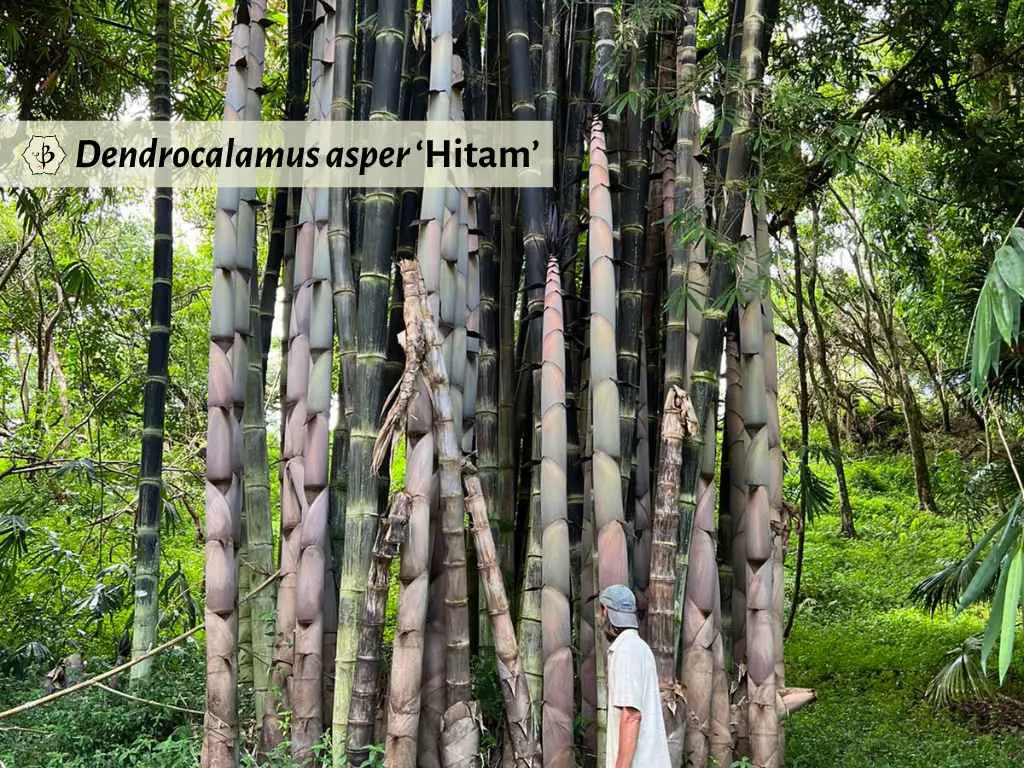
Not as dark and shiny as some other kinds of black bamboos, the culms of Black Asper have more of a dusty, dark brown look. Either way, it’s a majestic specimen, and if you can’t grow it in your own climate, keep an eye out for it next time you’re in Bali (or Maui)!
Where to buy black bamboo
Phyllostachys nigra, the common variety of black bamboo, is one of the most popular bamboo species of all. Any bamboo nursery is sure to have it. But you can also find it for sale at many large home and garden centers. Henon is fairly common among bamboo growers east of the Mississippi, but less so out West.
If it’s one of the tropical varieties of black bamboo you’re looking for, like Black Asper or Timor Black, you’ll have a harder time. Unless you live in Hawaii, Florida, or Southern California, you’re unlikely to find them at all. And even if you do, you’ll probably have to visit a specialist.
Check out our directory of Bamboo Nurseries for some of the best sources of bamboo plants.
Further reading
If you found this discussion interesting, you might also enjoy some of the following articles about bamboo speciation.
- Bambusa oldhamii: The most popular bamboo
- Phyllostachys edulis ‘Heterocycla’: Tortoise shell bamboo
- Golden bamboo: Species that glow
- Buddha belly: Bamboo of the highest calling
- Blue bamboo: Species that stand out
- Tropical bamboo
- Giant bamboo
FEATURED IMAGE: Classic black bamboo, Phyllostachys nigra in France. Photo by Fred Hornaday.
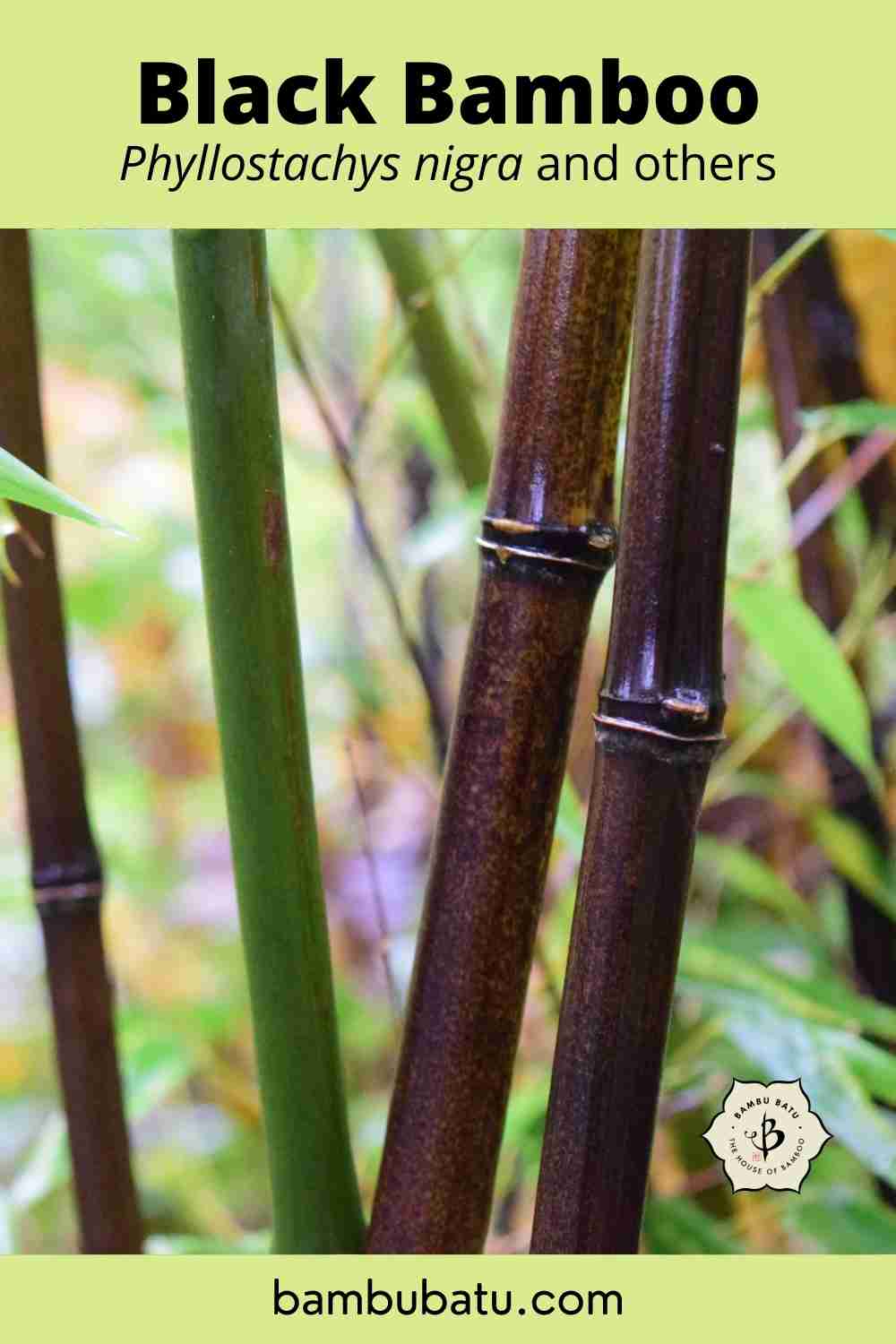


























My black bamboo is flowering (spring/summer 2022). It is also sending up new culms. Anything I can do to help the stand survive?
It’s a rare flowering event for P. nigra right now. Some say they will die, others say you can keep nurturing the rhizomes and the plant will recover.
Hi,
Our black bamboo bloomed and the canes are dying. Do you know if this will cause the roots to die as well?
We live in Park City, Utah and would like to line our side yard with a bamboo that can survive our winters. In 10 years here the lowest temperature I’ve seen is about -5 to -10 degrees Fahrenheit. We would plant it in the ground so the roots would be directly in the earth (versus a container). Is this feasible? Do you ship your product to Utah>
Minus 5-10 Fahrenheit should be OK. It will be more resilient in the ground. Insulate it with a generous layer of mulch. No, we do not ship plants.